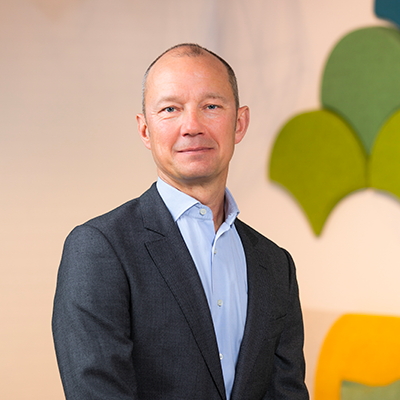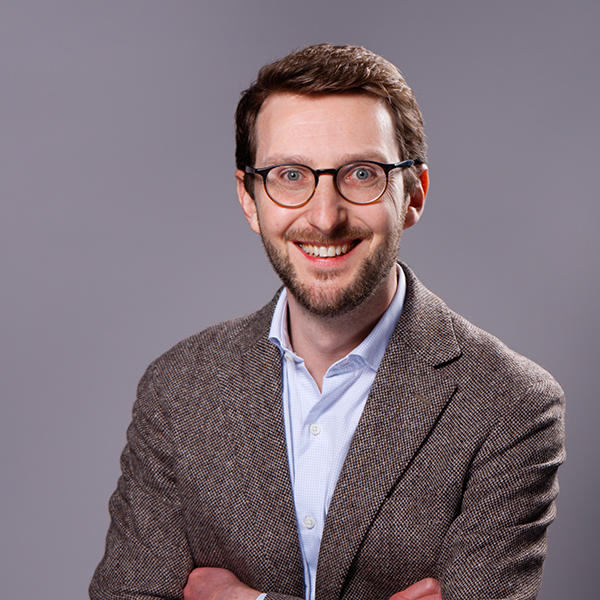Insights: Mathieu Lamiaux, good morning. By way of an introduction, could you remind us what the term “medium-sized” or “mid-size” pharmaceutical company refers to?
Mathieu Lamiaux: While there is no official definition of what the definition of a mid-size pharma company is, such company profiles display major similarities with one other.
We could just look at sales, which are generally between €1 and €5 billion, but this would be simplistic. Mid-size pharma companies may have different profiles – local or global player, specialist or “multi-business,” but what really distinguishes them from Big pharma and biotech instead lies in their capital structure. The majority of these are family-run or heritage companies, often governed by a foundation. Most of them are not listed on the stock exchange.
This last point gives them a very different relationship to time from that of the Big pharma players. Without shareholder pressure, they adopt an approach that is adapted to the long-term development process for a medicine. Unfettered by market fluctuations, their strategy is based more on a rationale of “transmission.”
Another point that all mid-size companies have in common is that they aspire to control the value chain of a medicine and of R&D activities, via production, marketing, and distribution. Through greater control over the drug chain, they aim to strengthen their credibility and independence, but also to capitalize on operational excellence and their knowledge of this value chain as a point of differentiation.
Conversely, biotech companies tend to master a single stage, preferring to specialize in ‘early stage’ research. Lately, Big pharma companies have shown a certain willingness to divest themselves of their research activities, in favor of strategies for acquiring high-potential assets in the final stages of development, in order to generate a faster return on investment.
Mathieu Lamiaux

Mathieu Lamiaux is a graduate of HEC Paris. He began his career with the Agence Française de Développement (AFD) in Africa. He joined the Boston Consulting Group (BCG) in 1997 as a consultant to players in the pharmaceutical industry and is the current director of the firm’s health care practice. Over the course of his career, he has acquired in-depth knowledge advising clients in the health care sector on commercial issues, market access, positioning and strategic orientation. He also leads the firm’s global health initiatives in Europe, working in close collaboration with the World Health Organization, the Global Fund, and a number of public-private partnerships to combat AIDS, tuberculosis, and malaria. He is also a member of the social impact, marketing and sales, & pricing, and global advantage practices.
I.: In your opinion, what are the major challenges facing a mid-size pharma company?
M. L.: I would say that the first challenge confronting such a company is its size. This is because the pharmaceutical industry is a globalized sector, in which needs are generalized. Scale effects are significant, particularly in terms of production, distribution, as well as research for conducting clinical trials or use of new technologies. In this context, size becomes a significant competitive advantage – particularly when compared with the budgets that, for example, big pharma devotes to R&D, which are of the order of €10 billion a year. These amounts are higher than the sales of most mid-size players!
Due to their extensive pipeline, the probabilities of success of the “big” players are potentially higher than those of a mid-size player. With a pipeline that is generally smaller, these mid-size players have no room for error in their investments.
It’s important to understand that in this environment the rules of the game are the same for everyone, even though not everyone starts out with the same advantages or the same opportunities.
This is why mid-size players need to be able to maximize every opportunity that comes their way.
“In this environment the rules of the game are the same for everyone, even though not everyone starts out with the same advantages or the same opportunities.”
Jérôme Klein

Jérôme Klein is a graduate of HEC Paris. After four years as a strategy consultant with Roland Berger, Jérôme Klein joined the Ipsen group, where he spent 15 years in various positions at international and local level. He began in corporate strategy and then joined the US subsidiary as director of financial planning. On returning to the head office in France, he took charge of business excellence activities for all specialty care businesses at the international level, with heavy involvement in this role in the launch of external growth partnerships. He then joined the group’s French subsidiary, where he was initially director of BI & customer excellence and was subsequently responsible for the Neuroscience and Rare Diseases Business Unit. In October 2023, he joined Servier as Group director of corporate strategy and secretary to the Executive Committee.
I.: Jérôme Klein, what is your opinion on the subject?
Jérôme Klein: For a medium-sized company like Servier, this kind of environment means that we have to play a smart game in order to continue to innovate in a sustainable way.
We find ourselves at the heart of a number of challenges: the urgent need to innovate, the obligation to navigate a complex geopolitical context, the need to adjust our industrial footprint, but also an ever-greater number of players.
In order to stand out from our competitors, the Servier 2030 strategy is based on our strengths, which allow us to meet the challenges ahead and take advantage of every opportunity that comes our way.
In order to achieve this:
- We draw on our global geographic presence to meet the needs of patients around the world, not only in cardiometabolism and venous diseases (CMVD), areas in which we are a historic leader, but also in oncology.
- We are working to make our pipeline more specialized, in order to become more resilient. We invest almost 70% of our R&D budget in oncology, where we intend to become an innovative and leading player, particularly in precision oncology.
- We are focusing on open innovation in R&D, and rely on collaborative and external growth, which is an essential lever for accelerating research and development. By virtue of this strategy, our oncology portfolio now includes seven drugs for hard-to-treat cancers. Our pipeline is particularly robust, with no fewer than 35 projects in R&D (as of January 2024).
- Lastly, we draw on our specific characteristic of being governed by a Foundation. Our independence is attractive factor as we are committed to the long term. Because the patient is the ultimate beneficiary of our actions, our projects are meaningful.
I.: In your opinion, what opportunities should a mid-size company seize in order to increase its chances of success?
M. L.: The opportunities lie in the capacity of a mid-size player to dare to go where others won’t go.
Mid-size players will find opportunities for success by targeting smaller patient groups whose needs are not yet covered. But also by investing in geographical areas where other players are not yet present. This approach allows them to maximize their impact, not only on patients, who may sometimes finally see a treatment emerge, but also on their partners, by distinguishing themselves in a niche market. In order for this strategy to be successful, you obviously need to excel at executing it.
Servier is a good example of this, because the group has been able to swing into action and find winning solutions. For example, it has drawn on the geographical footprint of its historical portfolio to develop new activities in markets that are sometimes difficult to penetrate, which other competitors do not enter because of the high risk of failure.
Lastly, in the hunt for assets, a biotech firm is often more inclined to transfer its assets to a mid-size company with which it has had the opportunity to talk directly to top management, and where it is convinced that the value of the asset will be enhanced. For a start-up, parting with an innovation is a form of giving up. Because of their “human-sized” structure and their long-term vision, mid-size companies offer assurance that their asset will be in good hands.
I.: Jérôme Klein, could you explain to us how this translates in practical terms for Servier?
J. K.: As you mentioned, Servier has been able to draw on its historical pillars to develop its expertise in oncology.
In 2017, we began our transformation to become a recognized player in this therapeutic area, which is particularly dominated by big pharma. By virtue of our global footprint in cardiometabolism, our scientific leadership, our boldness and our resolutely patient-focused approach, we have succeeded in successfully launching onto this competitive oncology market, focusing on hard-to-treat cancers for which patient needs are sub-optimally met, or still unmet.
Finally, I’d like to pick up on an important point raised by Mathieu: our attractiveness. I’m convinced that because we are governed by a Foundation, the ultimate beneficiary of our action is the patient. I am also convinced that not being quoted on the stock market and the fact that we are structured on a human scale are considerable advantages for our capacity to attract and develop talent. It’s also a key factor in enabling employees to plan for the long term within the Group.
“We find ourselves at the heart of a number of challenges: the urgent need to innovate, the obligation to navigate a complex geopolitical context, the need to adjust our industrial footprint, but also an ever-greater number of players.”
I.: Thank you both for this rich and enlightening interview. A final word?
M. L.: The size of mid-size companies is both a challenge and an opportunity. They are certainly as profitable as big pharma, starting at the time when they find the “blind spot” where size is no longer a disadvantage.
* Deloitte report “Measuring the return from pharmaceutical innovation 2021”


